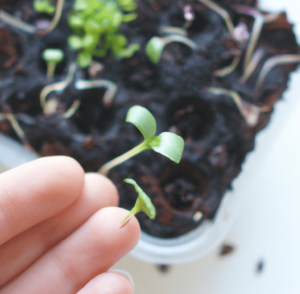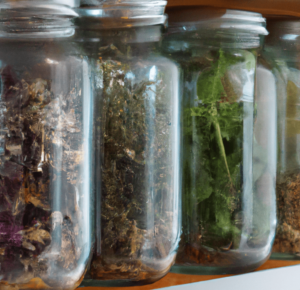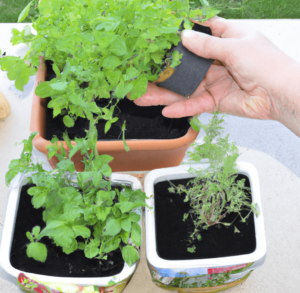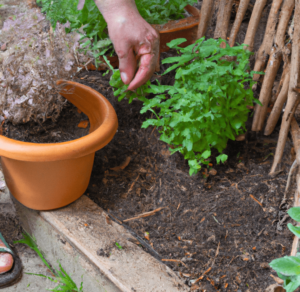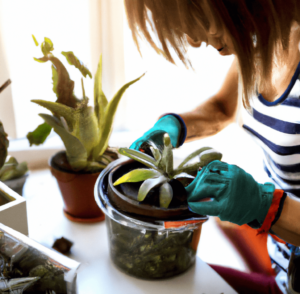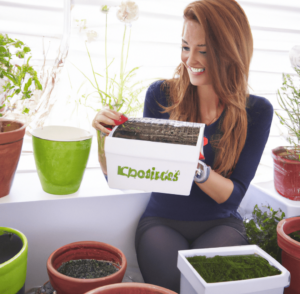Learning how to control pests in your garden naturally means that you’re attracting beneficial insects into your garden and protecting your plants without harming the environment. Here’s what you need to know about doing this.
Identifying Pests
The first step in learning how to control pests in your garden naturally is properly is identifying the pest. Regularly checking your garden for any indications of pest damage is crucial if you’re a gardener. It may also involve the presence of bugs themselves, chewed-up plant parts, and wilting foliage. You may adjust your natural pest control techniques to target the specific pests that are harming your plants and protect your garden by identifying the bugs that are causing them.
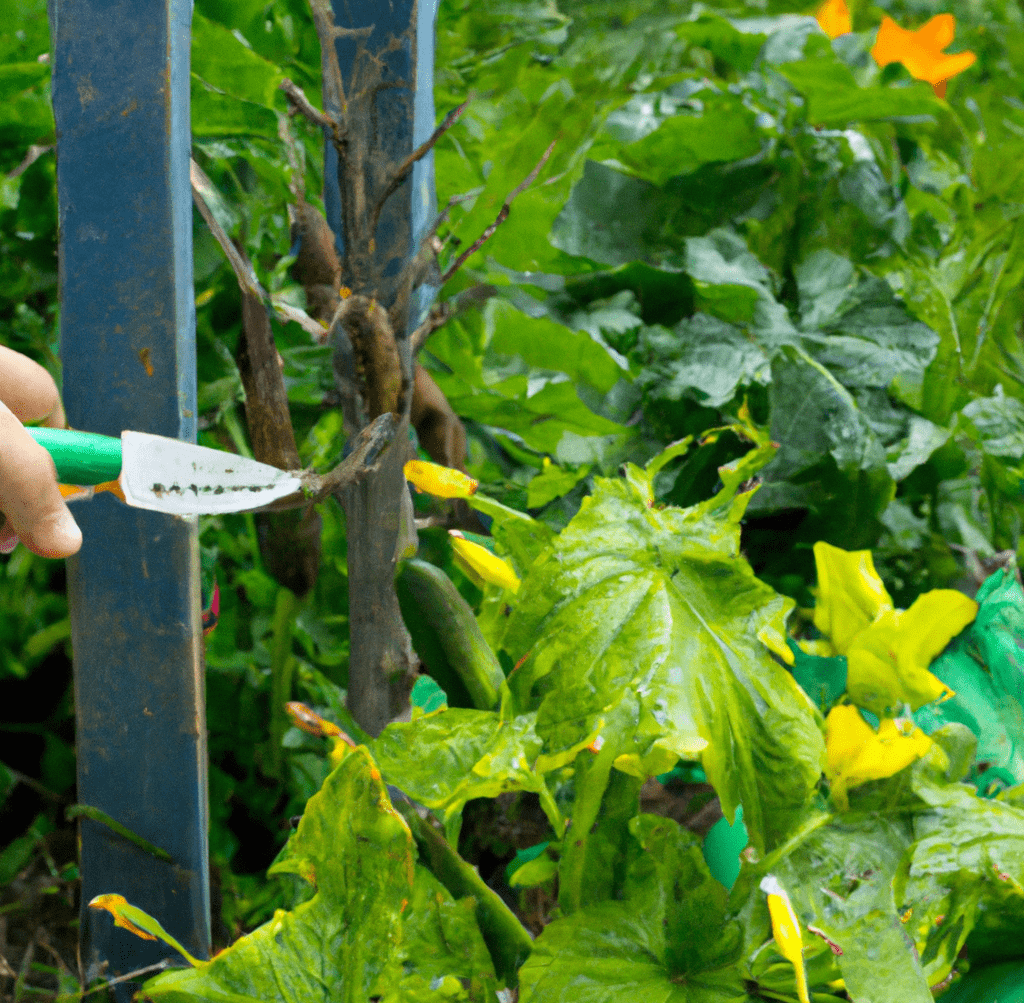
Common Garden Pests and Their Characteristics
Before learning how to control pests in the garden naturally, the most common ones you’ll come across include:
- Aphids: Tiny, soft-bodied insects that feed on plant sap and cause wilting and yellowing of leaves.
- Caterpillars: Caterpillars, which are the larvae of moths and butterflies, eat leaves and stems while leaving holes in their wake.
- Slugs and snails: These gastropods leave a slime trail behind them as they feast on plant leaves and stems.
- Thrips: These tiny, elongated insects feed on plant sap and can limit plant growth and deform leaves.
- Whiteflies: Whiteflies are tiny, white insects that feed on plant sap and can stunt plant growth and cause yellowing of the leaves.
Importance of Proper Identification in Selecting Control Methods
Learning how to control pests in your garden naturally is important and is only effective if you know what you’re dealing with. For instance, in order to select the best control approach for a plant that is being harmed by a specific insect, it is crucial to identify the insect. Some insects can be regulated naturally, like when beneficial insects are released, while other insects could need chemical controls.
If you employ the incorrect control strategy, you run the risk of endangering not only the pest but also helpful insects and the plants themselves.
Cultural Methods of Control
As you learn how to control pests in your garden naturally, there are cultural methods. These techniques involve modifying the growing environment to lessen pest activity or damage. In traditional Japanese gardening, where the goal is to achieve a harmonic balance between plants and their surroundings, cultural management techniques have been utilized for generations. Pests like aphids can be effectively controlled using cultural approaches without endangering the environment or human health. These techniques can help improve the overall health of the plants in the garden.
Explanation of How Proper Gardening Practices Can Prevent Pest Infestations
While learning how to control pests in your garden naturally is a good skill to have, you should also learn about good gardening practices. In gardening guides, there’s a sophisticated and delicate balancing act between protecting plants from pests that could destroy them and fostering their growth and well-being. In the garden, preventing insect infestations can be largely prevented by using proper gardening techniques.
- Acquiring a basic understanding of your garden’s natural ecosystem is the first step in preventing pest infestations. This requires being aware of the kinds of plants that thrive there, the kinds of insects and other pests that live there, and the environments that are most conducive to the survival of these pests.
- The selection of plants that are appropriate for your local conditions is one of the fundamental components of good gardening techniques. This entails choosing plants that are either local natives or have a track record of being resilient to pests and diseases that are common in your area. Use the proper soil when planting, and make sure there are enough water, light, and nutrients to support strong plant growth.
- Crop rotation is a crucial component of proper gardening techniques. This entails varying the crops you cultivate in a specific area each year. By doing so, the likelihood of pest infestations can be decreased as well as the accumulation of illnesses and pests in the soil.
- It’s critical to routinely check your garden for symptoms of illness and pests. Minor issues can be avoided from turning into significant infestations with early discovery and appropriate treatment. You can alter your garden to preserve a healthy balance by regularly monitoring the interactions between plants, insects, and other living things.
- Companion planting is another efficient cultural technique. This entails planting various crops alongside one another that benefit one another. For instance, putting marigolds close to veggies can help prevent pests since the marigolds’ potent aroma can help fend off insects. Similarly, growing specific herbs close to vegetables can benefit the health of vegetable plants and lower the likelihood of insect infestations.
- Encouraging beneficial insects in your garden is another cultural strategy for avoiding pest infestations. Beneficial insects that feed on pests, including ladybugs and lacewings, can help keep populations in check. By including a range of flowering plants in your garden that serve as food and habitat for beneficial insects, you may encourage their growth.
Biological Methods of Control
As you learn how to control pests in your garden naturally, you can use biological control methods.
How Beneficial Insects, Animals, and Microorganisms Can Be Used to Control Pests
Garden pests can be managed naturally and sustainably by using beneficial insects, animals, and microbes, according to biological pest management approaches:
- Gardeners may lessen the need for synthetic pesticides and preserve a robust and healthy garden ecology by fostering and supporting these beneficial creatures in the garden.
- Utilizing beneficial insects that feed on garden pests and help limit their populations, such as ladybugs, lacewings, and parasitic wasps is one efficient form of pest control. For instance, ladybugs naturally eat spider mites and aphids, and lacewings eat a variety of pests, such as caterpillars, mites, and insect eggs.
- Utilizing beneficial creatures, such as birds and bats, which consume garden pests and assist in maintaining their populations under control, is another efficient strategy. Gardeners may entice these helpful creatures to settle in the garden by providing birdhouses and bat houses, where they will aid in pest control.
- You can utilize microbes to control garden pests. For instance, caterpillars and other insect pests can be managed with bacteria like Bacillus thuringiensis (Bt). Bt bacteria create a toxin that is poisonous to some insects but not harmful to people or animals.
- Nematodes are another example of biological control techniques used in gardening to managing pests that live in the soil, such as grubs and cutworms. Nematodes are little, worm-like organisms that are poisonous to garden pests but safe for humans and dogs. Nematodes are microorganisms that, hunt down and infect garden pests, killing them within a few days if you’ve put them into the soil after learning how to fertilize your garden properly.
- Companion planting is another productive biological control technique used in gardening. Companion planting is the practice of planting specific crops next to one another in an effort to ward off pests and encourage robust growth. For instance, growing marigolds near vegetables can aid in preventing damaging pests like root-knot nematodes, while planting basil close to tomatoes can fend against aphids and spider mites.
As you learn how to control pests in your garden naturally, you can use these in addition to cultural and physical methods.
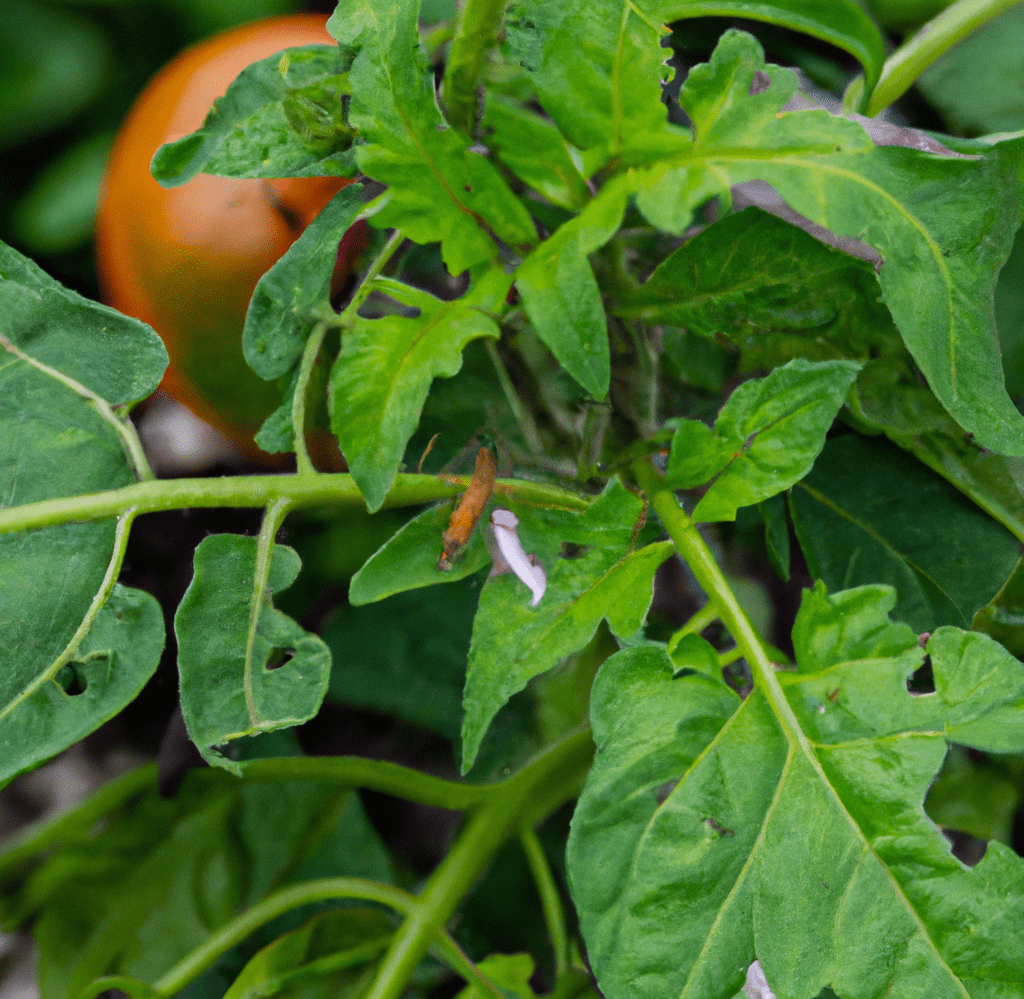
Physical Methods of Control
Now that we’ve covered how to control pests in your garden naturally biologically and culturally, you can choose to physically manage pests too.
How Physical Barriers and Traps Can Be Used to Control Pests
To stop pests from getting to the plants, physical barriers must be constructed. For instance, gardeners can cover their plants with fine mesh nets to keep insects from landing on them and eating them. Utilizing physical barriers like copper strips, which can deter slugs and snails from getting to the plants, is an additional choice.
There are also traps that employ bait to entice and capture pests. For instance, aphids and whiteflies can be captured using yellow sticky traps. There are also pheromone traps that attract and capture pests by using their pheromones. Slugs and snails are drawn to the yeast in beer, thus beer traps can also be used to catch them.
Examples of Physical Control Methods
You can learn how to control pests in your garden naturally with these physical control methods:
- The use of row covers to shield plants from pests is one illustration of a physical control technique. The lightweight, porous material used to make row covers allows light, air, and water to pass through while keeping pests from getting to the plants. This approach works particularly well against aphids, whiteflies, and moths. To create a barrier between the plants and pests, gardeners need only place the row cover over the plants and fasten it to the ground.
- Pests can also be manually picked out as a physical control measure. With this technique, the gardener must routinely check their plants for insect indications and manually get rid of them. This technique can be used to manage pests like snails, slugs, and caterpillars in tiny gardens.
Chemical Methods of Control
While we recommend learning how to control pests in your garden naturally, you may need chemicals at times. Pests like insects, birds, and other animals can harm or kill plants in the garden. In order to combat this problem, chemical treatments are frequently utilized, however, gardeners may prefer to use organic or least-toxic chemical solutions in order to protect their plants and the environment:
- Neem oil, for instance, is a popular organic insecticide made from the neem tree and is effective against a range of pests, including fungi, mites, and insects.
- Synthetic chemicals known as least-toxic chemicals are less dangerous than other common pesticides. For instance, pests can be effectively controlled while providing a decreased risk to the environment and human health with the use of insecticidal soaps, horticultural oils, and botanical pesticides like pyrethrin.
Guidelines for Safe and Effective Use of Chemicals in the Garden
To safeguard the safety of plants, people, and the environment, we recommend learning how to control pests in your garden naturally but if you’re using chemicals:
- The best product to use is one that is suited for the pest you are attempting to manage and the plants you are trying to preserve. Before using a chemical, check sure it is safe for both. Always carefully read the label and adhere to the directions.
- Applying insecticides at the proper moment, when pests are most sensitive, is crucial. As a result, the number of chemicals used will be reduced while ensuring optimal efficiency.
- Use just enough of it: Too much chemical application can harm both the environment and the plants you are trying to protect. Pay close attention to the directions and accurately measure the chemical.
- Wear safety equipment: To prevent exposure to chemicals when applying them, wear gloves, a mask, and protective clothing.
- Chemicals should be stored carefully out of the reach of children and animals, and in a cold, dry area.
- Follow the guidelines for safe disposal of chemicals, including empty containers and any lingering product, to dispose of them appropriately.
Bottom Line: How to Control Pests in Your Garden Naturally
Gardeners have a variety of options for safeguarding their plants against hazardous insects, birds, and other species, ranging from physical barriers and traps to organic and least-toxic pesticides which can be used after you learn how to control your pests naturally. We urge you to experiment and see what works for your garden best.
How to Control Pests in Your Garden FAQs
What role does pest management play in gardening?
Because pests have the potential to harm plants and the sensitive environment, pest management is essential to maintaining a garden’s health and prosperity. Natural pest control methods are available for gardeners who want to protect their plants, beneficial wildlife, and the environment.
How do you tell which pests are in your garden?
It’s important to regularly inspect your garden for signs of pest damage, such as bugs, chewed-up plant parts, and wilting foliage. The natural pest management methods can be adjusted by determining the specific pests.
What common garden pests are there?
Aphids, caterpillars, slugs & snails, thrips, and whiteflies are a few examples of typical garden pests.
Why is accurate identification crucial for pest management?
Accurate identification is necessary to select effective management strategies for diseases and pests in gardening. Correctly identifying the pest or disease that is harming the plants is essential to choosing the optimal treatment strategy. A healthy and successful garden depends on knowing the natural environment and how plants and insects interact.
What cultural approaches to pest control are there?
Pest management strategies used in gardens without the use of pesticides are known as cultural methods of control. These methods alter the environment where plants grow in order to lessen pest activity or harm. Techniques for managing culture are frequently effective and safe for both the environment and human health.
How to control pests in your garden and stop pest infestations?
By balancing plant development and protection, good gardening techniques can generally minimize insect infestations. Good gardening practices include knowing the natural environment of the garden, choosing the right plants, implementing crop rotation, and routinely inspecting the garden.
In gardening, what is biological control?
Biological control in gardening refers to the sustainable management of garden pests through the use of natural predators and pathogens. In gardening, examples of biological control include using ladybugs to manage aphids, nematodes to combat pests that live in the soil, and companion planting.
What are some physical pest control strategies for gardening?
Physical barriers like mesh nets, copper strips, traps with bait, row covers to protect plants, and hand-picking pests are all examples of physical pest control techniques used in gardening.
What gardening pests are chemically controlled by methods?
Most pests are managed with insecticides, herbicides, and fungicides.
What distinguishes organic pest control techniques from the least damaging chemical ones in gardening?
Less-toxic chemical methods use chemicals that have a reduced impact on both human health and the environment, whereas organic chemical methods of pest control in gardening use natural, organically produced substances to manage pests. Depending on the type of pests, the size of their garden, and personal preferences, gardeners should decide which chemical pest control approach to use.


